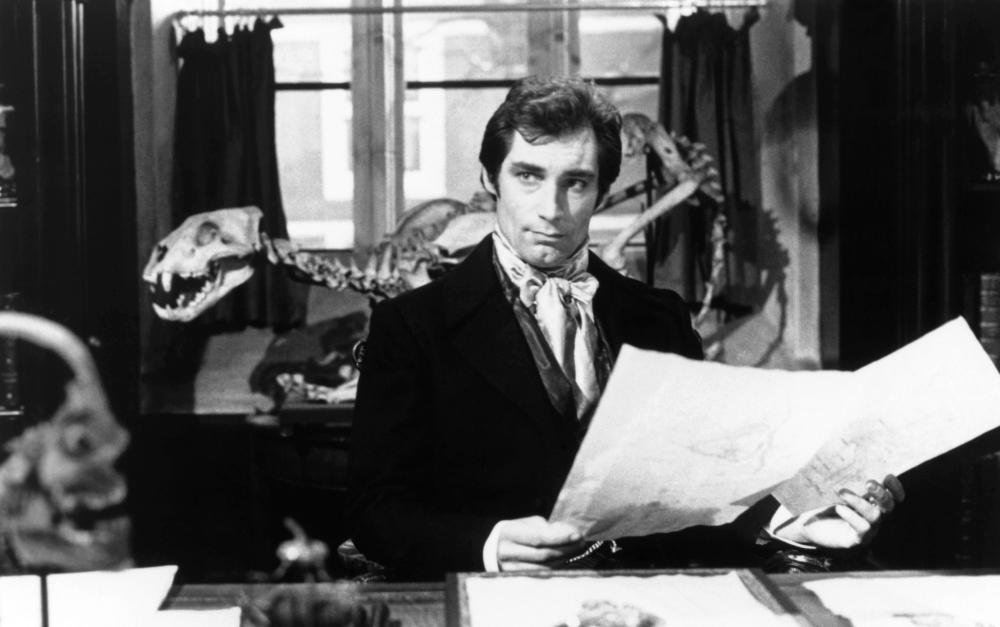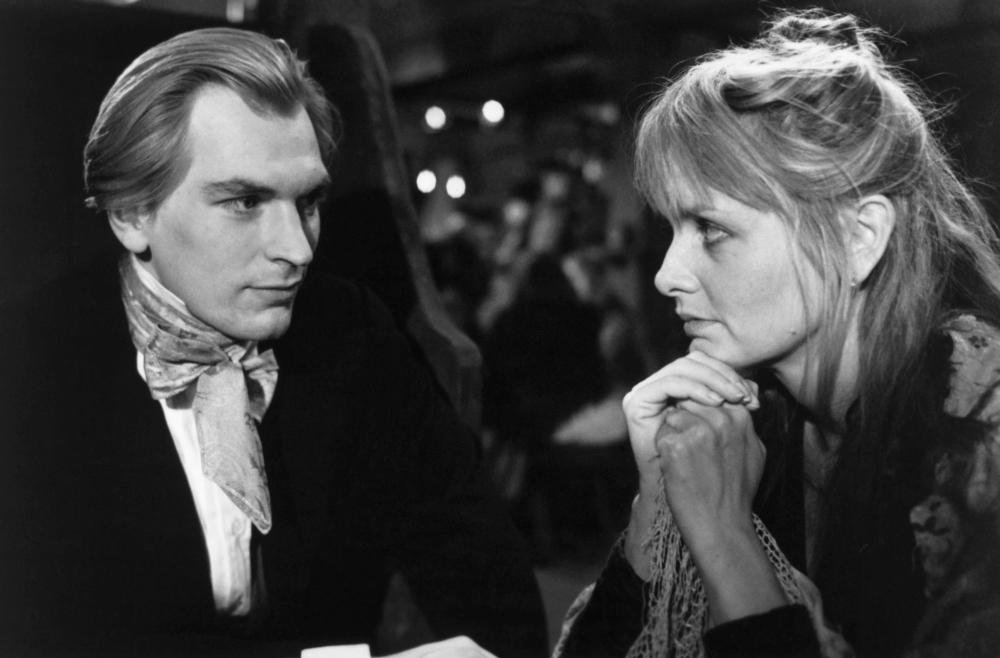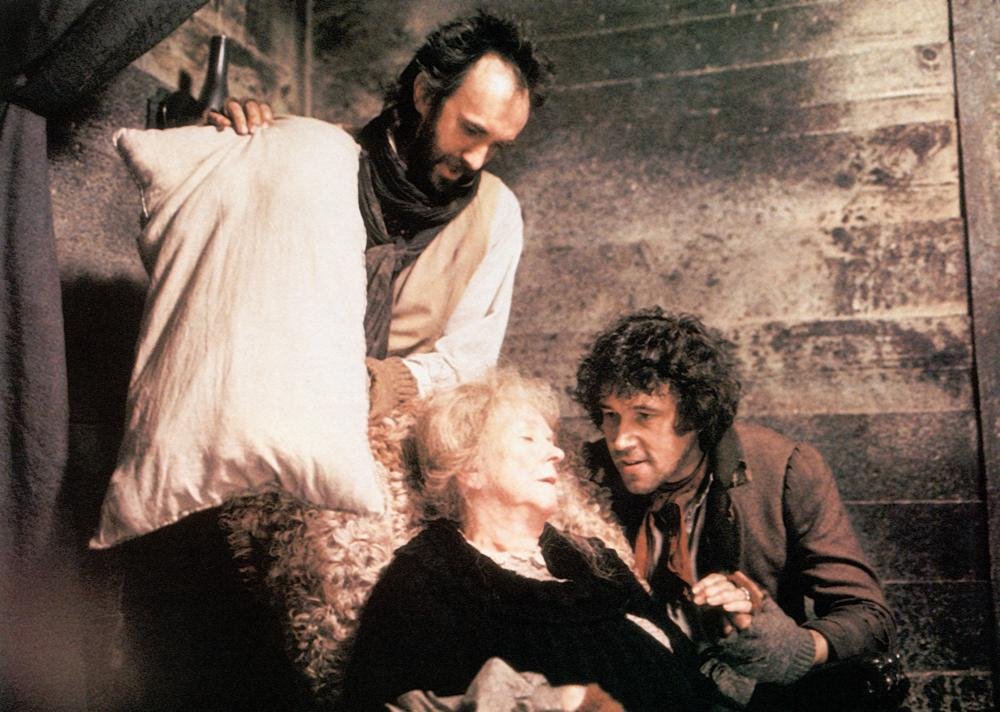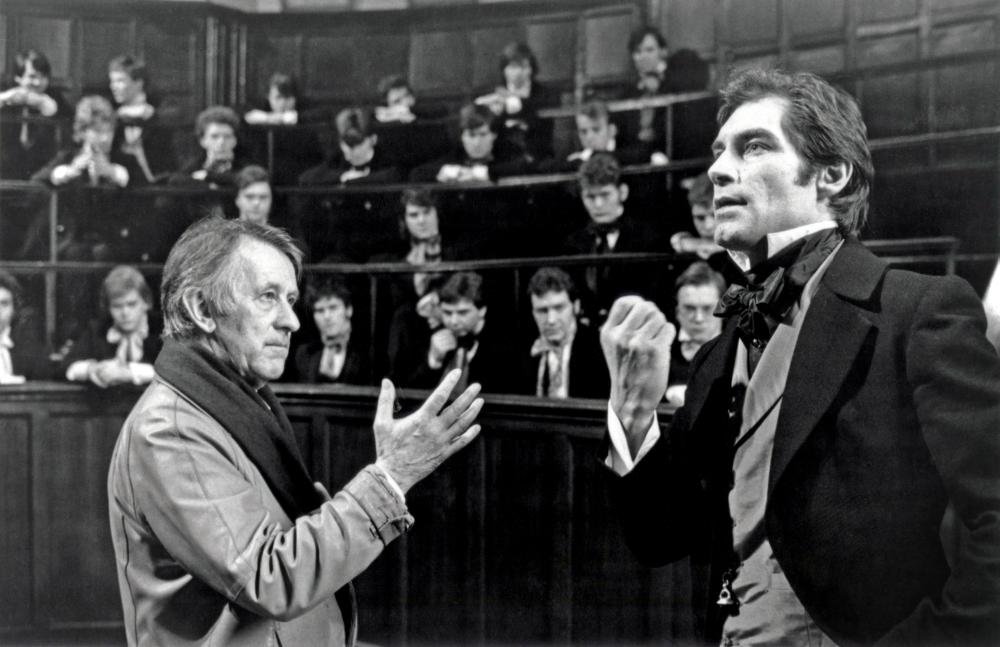THE DOCTOR AND THE DEVILS: An Upscale, Modern Variation On Hammer Moodiness
Despite its pedigree - Freddie Francis directing, Mel Brooks producing, adapted from a vintage Dylan Thomas script - The Doctor And The Devils vanished into obscurity shortly after its 1985 release. The easy answer for this is that Brooks' production company was in a dispute with partner 20th Century Fox, which led to it being dumped and abandoned by the studio. However, it still would have been a tough sell even with studio support: a period film about a gruesome crime that is not quite gothic horror and not quite straight  drama either. That said, it's a lost film that deserves rediscovery, particularly if you're a fan of Hammer-style horrors.Ronald Harwood's script, adapted from Dylan Thomas' original work, is essentially account of Scotland's notorious "Burke and Hare" true crime story. Dr. Rock (Timothy Dalton) is a gifted anatomist who longs to rise above the religion-repressed mood of his times and learn more about the human body for the benefit of medical science. As a result, he's willing to break the law by buying extra cadavers from some shadowy gents who rob graves to get him the "study material" he needs.And that's where Fallon (Jonathan Pryce) and Broom (Stephen Rea) come into the picture. These two hard-drinking petty crooks are always on the lookout for a big and easy score - and when they hear about Dr. Rock's needs, they're willing to do the dirty work. Their desperation for easy money first leads
drama either. That said, it's a lost film that deserves rediscovery, particularly if you're a fan of Hammer-style horrors.Ronald Harwood's script, adapted from Dylan Thomas' original work, is essentially account of Scotland's notorious "Burke and Hare" true crime story. Dr. Rock (Timothy Dalton) is a gifted anatomist who longs to rise above the religion-repressed mood of his times and learn more about the human body for the benefit of medical science. As a result, he's willing to break the law by buying extra cadavers from some shadowy gents who rob graves to get him the "study material" he needs.And that's where Fallon (Jonathan Pryce) and Broom (Stephen Rea) come into the picture. These two hard-drinking petty crooks are always on the lookout for a big and easy score - and when they hear about Dr. Rock's needs, they're willing to do the dirty work. Their desperation for easy money first leads  them to murder the terminally ill to provide the doctor with "fresh meat" - and in no time flat, they work their way up to murder. Dr. Rock looks the other way when things get suspicious but all three men will pay a price for flouting the taboos of their times.The Doctor And The Devils must have seemed an odd proposition in the era of Rambo and Freddy Krueger. It's caught somewhere between the thoughtful, atmospheric subtlety of a Val Lewton production, particularly in the elegance of its Thomas-penned dialogue, and the full-blooded gothic approach of Hammer's '50s and '60s horror films. The presence of Freddie Francis in the director's chair enhances the Hammer-esque
them to murder the terminally ill to provide the doctor with "fresh meat" - and in no time flat, they work their way up to murder. Dr. Rock looks the other way when things get suspicious but all three men will pay a price for flouting the taboos of their times.The Doctor And The Devils must have seemed an odd proposition in the era of Rambo and Freddy Krueger. It's caught somewhere between the thoughtful, atmospheric subtlety of a Val Lewton production, particularly in the elegance of its Thomas-penned dialogue, and the full-blooded gothic approach of Hammer's '50s and '60s horror films. The presence of Freddie Francis in the director's chair enhances the Hammer-esque  feel, as he gives the film the kind of rich yet subtle visual style and bracing, tautly-paced direction one associates with those films.The results are never quite as devastating as they would like to be: it moves too fast to let its themes about societal repression versus unchecked ambition really sink in and a subplot involving the forbidden love between a Rock's assistant (Julian Sands) and a local prostitute (a surprisingly effective Twiggy) is both formulaic in concept and anti-climactic in execution.
feel, as he gives the film the kind of rich yet subtle visual style and bracing, tautly-paced direction one associates with those films.The results are never quite as devastating as they would like to be: it moves too fast to let its themes about societal repression versus unchecked ambition really sink in and a subplot involving the forbidden love between a Rock's assistant (Julian Sands) and a local prostitute (a surprisingly effective Twiggy) is both formulaic in concept and anti-climactic in execution. That said, if you approach as a modern, more intellectual update of the Hammer style, The Doctor And The Devils is diverting stuff. Francis' direction gives the film plentiful style while respecting the subtleties of the script. When the time comes for grim moments, like a nerve-jangling scene where the villains plot the murder of an old lady, the director knows when to deliver a visceral punch and when to pull back. There's a gorgeous musical score from John Morris built around a lilting, Celtic-style theme and the photography by Gerry Turpin and Norman Warwick gives the tale the fog-shrouded, earthy look it requires.Best of all, The Doctor And The Devils boasts a stellar English cast. A pre-Bond Dalton handles the demanding Thomas dialogue well and delivers both the charisma and the fatal arrogance the role needs. As the villains, Pryce is genuinely frightening as a crook who discovers an
That said, if you approach as a modern, more intellectual update of the Hammer style, The Doctor And The Devils is diverting stuff. Francis' direction gives the film plentiful style while respecting the subtleties of the script. When the time comes for grim moments, like a nerve-jangling scene where the villains plot the murder of an old lady, the director knows when to deliver a visceral punch and when to pull back. There's a gorgeous musical score from John Morris built around a lilting, Celtic-style theme and the photography by Gerry Turpin and Norman Warwick gives the tale the fog-shrouded, earthy look it requires.Best of all, The Doctor And The Devils boasts a stellar English cast. A pre-Bond Dalton handles the demanding Thomas dialogue well and delivers both the charisma and the fatal arrogance the role needs. As the villains, Pryce is genuinely frightening as a crook who discovers an  insatiable taste for murder while Rea conveys his partner's shifting reactions from greed to horror nicely. Twiggy provides a spirited turn as the brassy prostitute who attracts the killers' attention and there's also some fun work from a pre-Star Trek Patrick Stewart as Dr. Rock's stuffy, vindictive rival at the medical school.Simply put, time has been kind to The Doctor And The Devils. Its combination of vintage style, directorial verve and a killer cast make it a delight for those in touch with the antiquarian gothic pleasures of the Hammer horror film style - and its intellectual ambitions, even when not fully successful, allow it to provide some intriguing variations on the familiar.
insatiable taste for murder while Rea conveys his partner's shifting reactions from greed to horror nicely. Twiggy provides a spirited turn as the brassy prostitute who attracts the killers' attention and there's also some fun work from a pre-Star Trek Patrick Stewart as Dr. Rock's stuffy, vindictive rival at the medical school.Simply put, time has been kind to The Doctor And The Devils. Its combination of vintage style, directorial verve and a killer cast make it a delight for those in touch with the antiquarian gothic pleasures of the Hammer horror film style - and its intellectual ambitions, even when not fully successful, allow it to provide some intriguing variations on the familiar.


